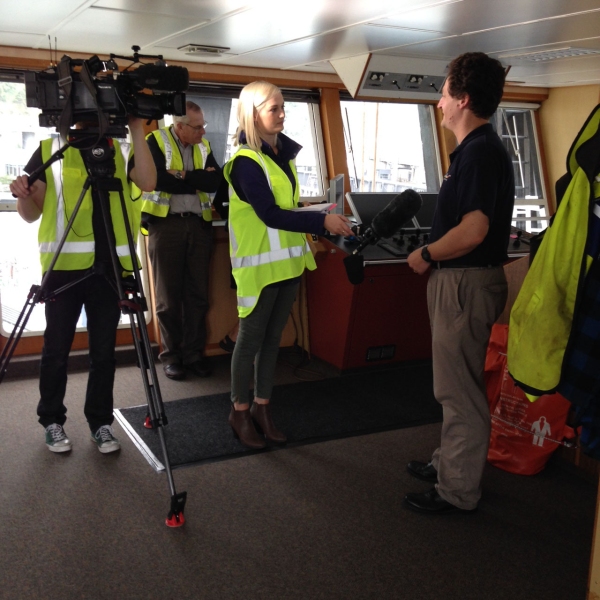NIWA deepwater research vessel Tangaroa docks in Wellington today to complete a successful six-week New Zealand-Australia Antarctic Ecosystems voyage.
“It is good to be home safe and sound” said Voyage Leader Dr Richard O’Driscoll, “Antarctica is a tough environment and we’ve had to work around some difficult ice conditions during the voyage.”
Beyond the imperative of returning safely, Dr O’Driscoll said that the 21 scientists and 19 crew onboard Tangaroa had accomplished all five science objectives they set out to achieve.
“We’ve been able to visit some of the ocean’s top predators – humpback whales, blue whales, killer whales and Antarctic toothfish – on their own patch, and we’ve thoroughly surveyed the ecosystems of Antarctica that support them. We’ve also gathered valuable oceanographic and atmospheric data to help monitor the Southern Ocean climate.”
Science objectives
The 42-day voyage achieved all five scientific objectives:
- To determine factors influencing the abundance and distribution of humpback whales around the Balleny Islands
- To locate and study blue whale foraging 'hotspots' in the northern Ross Sea
- To survey demersal (bottom-dwelling) fish species on the Ross Sea slope, particularly grenadiers and icefish, to better understand the ecological effects of commercial toothfish fishing in the region
- To deploy a moored echosounder in Terra Nova Bay to study Antarctic silverfish spawning during winter
- To collect oceanographic and atmospheric data from the Southern Ocean.
“The underwater acoustic devices allowed the scientists to pick up more than 40,000 whale calls and make over 520 hours of individual song recordings,” said Australian Antarctic Division Science Leader Dr Mike Double.
“After travelling a large distance without sighting any whales, we were staggered to witness over 80 of these rare whales in a relatively small area.
“With such a patchy distribution it is only possible to study this endangered species efficiently using the acoustic technology developed by the Australian Antarctic Division”.
The scientists photo-identified 58 individual blue whales during the voyage. These images will help estimate the population size, rate of recovery and movements of the endangered Antarctic blue whales.
The non-lethal whale research is part of the International Whaling Commission’s Southern Ocean Research Partnership (SORP).
Rough return
Relatively benign sea and weather conditions contributed to the success of the voyage, though some trawling activity was re-routed due to ice conditions in the Ross Sea and heavy weather was encountered in the ‘Ferocious Fifties’ and ‘Screaming Sixties’ on the way home.
Voyage legacy
The project leaders said the 2015 voyage would have an enduring legacy for the science community and the understanding of the unique ecosystems.
“It’s not just about finding whales” said Dr O’Driscoll, “we now have a much greater understanding of the big picture – the ecosystem – on which the top predators depend. When all the data from the voyage have been analysed we will have an improved scientific basis to understand impacts on the Southern Ocean and its inhabitants”.
The NZ-Australia 2015 voyage was a joint project between New Zealand’s National Institute of Water and Atmospheric Research (NIWA) and the Australian Antarctic Division, supported by Antarctic New Zealand and NZ Government ministries, Ministry of Business, Innovation and Employment (MBIE), Ministry for the Environment (MfE), and the Australian Government’s Department of Environment.
Watch highlights of RV Tangaroa's voyage below:

